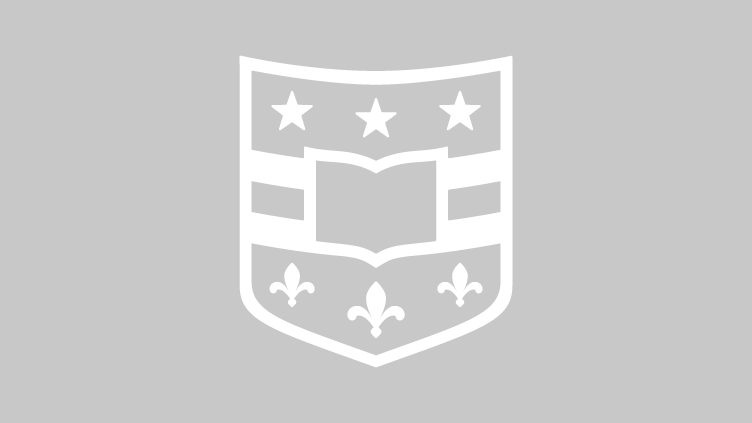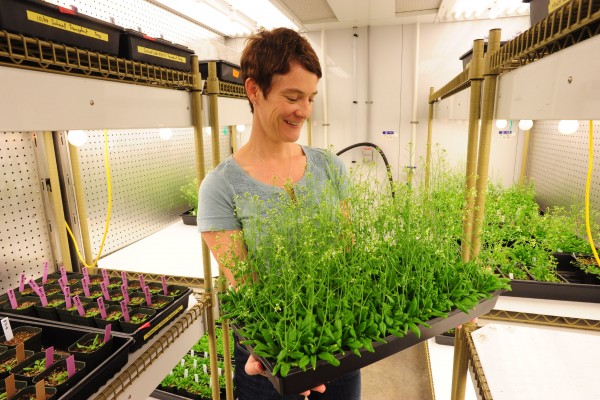Close family ties keep cheaters in check, study finds
Any multicellular animal poses a special difficulty for the theory of evolution. Most of its cells will die without reproducing, and only a privileged few will pass their genes. Given the incentive for cheating, how is cooperation among the cells enforced? In the Dec. 16 issue of the journal Science, Washington University in St. Louis biologists Joan Strassmann and David Queller suggest the answer is frequent population bottlenecks that restart populations from a single cell.
$1.38 million to pick ‘large’ pieces of supernova grit out of meteorite
Ernst K. Zinner, research professor of physics and of earth and planetary sciences, both in Arts & Sciences at Washington University in St. Louis, has received a three-year, $1,380,000 grant from the National Aeronautics and Space Administration to study presolar grains in a sample of the Murchison meteorite, a primitive meteorite that fell to Earth near the town of Murchison, Australia, in 1969. Presolar grains are literally tiny bits of stars — stardust — that were born and died billions of years ago, before the formation of the solar system. Some carry within them clues to the process of nucleosynthesis by which new elements are forged in the bellies of supernovae.
Brauer Hall receives six construction awards
Stephen F. & Camilla T. Brauer Hall, a new engineering building at the northeast corner of the Danforth Campus of Washington University in St. Louis, was recently honored with a Project Achievement Award by the Construction Management Association of America (CMAA). But the CMAA award is only the latest of seven honors garnered by Brauer Hall, home to the School of Engineering & Applied Science’s Department of Energy, Environmental & Chemical Engineering.
Making a light-harvesting antenna from scratch
At WUSTL’s Photosynthetic Antenna Research Center scientists have succeeded in making a light-harvesting antenna from scratch. The new antenna, modeled on the chlorosome found in green bacteria, is a giant assembly of pigment molecules. Chlorosomes allow green bacteria to photosynthesize even in the dim light in ocean deeps. The new technology may one day transform solar-powered devices.
Peter Wyse Jackson named George Engelmann Professor of Botany
Peter Wyse Jackson, PhD, was installed as the George Engelmann Professor of Botany in Arts & Sciences at Washington University in St. Louis in a ceremony held in Holmes Lounge, Ridgley Hall, Nov. 21. Wyse Jackson became president of the Missouri Botanical Garden in September 2010 and, by tradition, the president of the garden is also awarded the professorship at WUSTL
Cosmic voyager has a layover in St. Louis
Last January two amateur meteorite hunters dropped by Randy Korotev’s office at Washington University in St. Louis to show him their latest purchase, a 17-kilogram pallasite meteorite found in 2006 near Conception Junction (population 202) in northwest Missouri.Korotev, an expert in lunar meteorites, identified the stone as a piece of an asteroid. His lab also analyzed crystals within the rock to help identify its body of origin, eventually referring the meteorite hunters to UCLA for analysis of the metal in which the crystals are embedded.
I-CARES career development awards go to Fortner, Williams
Two engineering faculty have been chosen for I-CARES career development awards: John Fortner, PhD, and Brent Williams, PhD, both assistant professors in the Department of Energy, Environmental & Chemical Engineering. I-CARES, the International Center for Advanced Renewable Energy and Sustainability, was established in 2007 to encourage interdisciplinary research on problems in the fields of energy, environment and sustainability.
WUSTL receives Gates Foundation Grand Challenges Explorations funding
Yinjie Tang, PhD, the Francis Ahmann Career Development Assistant Professor in energy, environmental & chemical science, has won funding from the Bill & Melinda Gates Foundation to pursue an innovative global health research project, titled “Using fecal sludge for butanol fermentation.”
Axelbaum installed as Stifel & Quinette Jens Professor
Richard L. Axelbaum, PhD, professor of energy, environmental & chemical engineering in the School of Engineering & Applied Science, is the new Stifel & Quinette Jens Professor in Environmental Engineering Science. Chancellor Mark S. Wrighton installed him in a ceremony Oct. 31 in Brauer Hall.
Plants feel the force
At the bottom of plants’ ability to sense touch, gravity or the proximity of a nearby trellis are mechanosensitive channels, pores through the cells’ plasma membrane that are opened and closed by the deformation of the membrane. Elizabeth Haswell, PhD, a biologist at Washington University in St. Louis, is studying the roles these channels play in Arabidopsis plants by growing mutant plants that lack one or more of the 10 possible channel proteins in this species.
View More Stories

